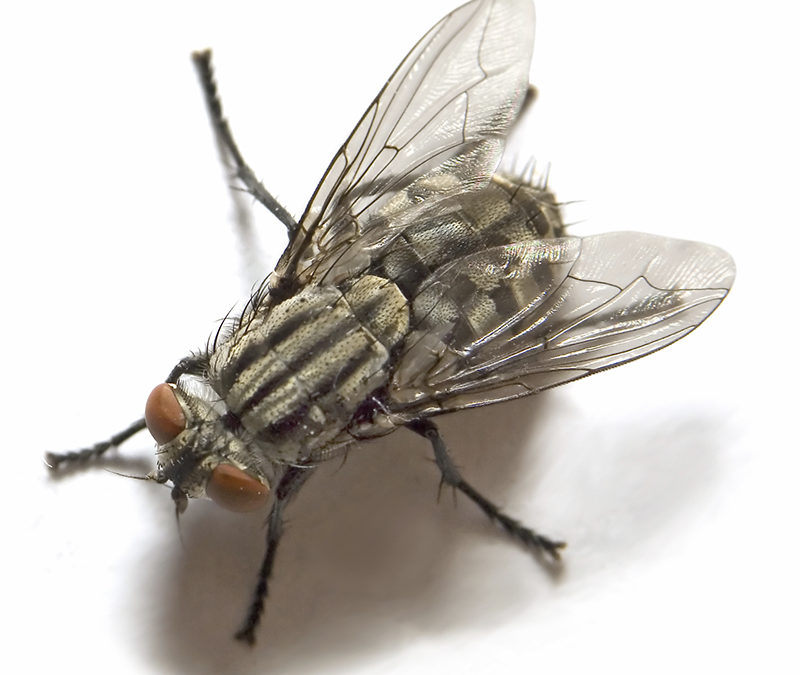Name: House Fly, Musca domestica
Lifecycle: Complete metamorphosis
Egg: Laid in rotting vegetation or animal waste. Hatch between 8hours to 2 days.
Larvae: Grow to a size of 12mm, take up to 3 moults and on average reach their pupal stage within a week.
Pupae: Pupa take 1-2 weeks to develop inside reddish brown cases.
Adult: Adults are 6mm with a greyish striped thorax with a pale yellow thorax. Can live for several weeks dependant on food availability and temperature.
Description
The larvae are 12mm, whitish and legless, usually living in a semi liquid food medium. They will migrate away from the food to find a warm, dry location to pupate in a reddish brown pupal case which darkens in hue as it develops. When the adults emerge they are 6mm long with a greyish stripped thorax and yellowish abdomen. The wings of the adult fly are slightly spread when at rest.
The larvae are 12mm, whitish and legless, usually living in a semi liquid food medium. They will migrate away from the food to find a warm, dry location to pupate in a reddish brown pupal case which darkens in hue as it develops. When the adults emerge they are 6mm long with a greyish stripped thorax and yellowish abdomen. The wings of the adult fly are slightly spread when at rest.
Habitat
The housefly is found worldwide, but in the UK is most commonly associated with any sites which have a lot of decaying organic matter.
The housefly is found worldwide, but in the UK is most commonly associated with any sites which have a lot of decaying organic matter.
Signs of infestation
Larvae tend to produce ammonia when they moult giving harbourage a distinct and unpleasant smell. Adults can be seen flying through the air.
Larvae tend to produce ammonia when they moult giving harbourage a distinct and unpleasant smell. Adults can be seen flying through the air.
References
1. The British Pest Management Manual. Section 5, pg 155.
2. Lab notes, Tarakan International.
1. The British Pest Management Manual. Section 5, pg 155.
2. Lab notes, Tarakan International.
3. BPCA Manual, Chapter 6.

